The video games industry has been established for almost half of the 21st century and Malaysia was once considered an unchartered territory in the map of the gaming world. Now, Malaysia is ranked number 21 in global games revenue with USD654 million (RM2.64 billion) ahead of Netherlands and Poland, together with 2.4 million enthusiastic gamers.
Before Malaysia become home to many local and international gaming studios, there were a lot of talented Malaysians that have contributed their talents to develop some of the famous game franchises like the Uncharted series, Gears of War and Assassin’s Creed series.
Born and raised in Kuala Lumpur with 15 years’ worth of game-making experience, Mufizal Mokhtar is no stranger to the industry. He was responsible for creating breathtaking visuals and art assets for small indie games to huge triple-A names for the likes of Ubisoft, GameBrains and more.
Family tree with artistic roots

Young Mufizal (in red circle) with his family
“My mother was a fashion designer, she did a lot of arts from painting to drawing,” said Mufizal. Despite having an innate talent in creative arts, his mother advised him to step out of his comfort zone and continue his studies in audio engineering.
He became a professional audio engineer for a while and joined the audio/visual production house, Betarecs who was created by composer and music producer Freddie Fernandez. The same company was involved in Malaysia’s all-time popular reality TV show, Akademi Fantasia in 2003.
But he never stopped drawing, whether it’s hand-drawn or digital-drawn. He was also doing a lot of freelance artworks from simple drawings to intricate 3D models. After a while, he realised that his freelance works started paying more than his current job.
“They said I cheated”
Back in the early 2000’s, video game studios were a rare sight to behold in Malaysia. Without any knowledge in making games, Mufizal learned everything he could via the Internet. Committed to his craft, he applied for a job in GameBrains, one of the first video game companies in Malaysia.
But his career change wasn’t a smooth sail. He got rejected twice because of his zero knowledge of game development. “I applied one time and I was completely rejected because I have no experience at all. They gave me an art test and I failed miserably. Based on that, I asked them what went wrong with it and they were kind enough to give me feedback. I tried again. I failed again.”
He revealed that for the art test, he had to animate a character in pixelated style. This assessment put Mufizal’s skills to the test as an artist who specialised in 3D arts.
“So what I did was I modelled the character in 3D, then I rigged, animated and rendered it in 3D Studio Max (now as Autodesk 3ds Max, a computer program to create 3D models and animations). To make the pixelated character, I brought it into Adobe Photoshop and reduced the details to pixels before submitting it.”
“Then they found out and said to me, ‘Hey, you’re cheating, you can’t do like this!’ But what’s the difference? It is still the same result,” claimed Mufizal.
Not giving up, his “creative” third application was accepted by the good people of GameBrains. He shared that the challenging interview was the company’s way to maintain the meticulous art assets that they wanted to build.
“I believed that the reason I got hired by GameBrains is the way I showed my creativity in approaching problems. Although you don’t know how to do something, you shouldn’t give up. You should try and find creative ways to do it,” he stated.
From audio engineer to game developer
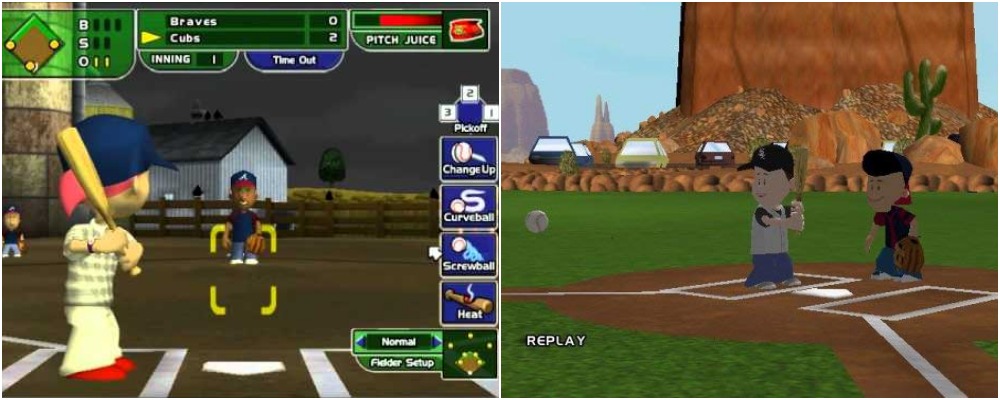
Backyard Baseball for the PlayStation 2 and PC
He put on many different hats in the GameBrains. “I went through all the job scopes. I started off as an environment artist, then I became a prop artist. Next, I was a character modeller, a rigger and an animator. I also did some texturing. I did everything until I became the lead artist.”
“Once I became the lead artist, I was more in charge and I could direct (the team). I learn to extend what I can do to other people. For example, how would I approach this problem, then that’s how I would tell other people to do it. In a way, they become the extension of my hands. They’re like self-learning AI (artificial intelligence). You teach them how to do things,” he explained.
Mufizal was involved in creating art assets for GameBrains’ Backyard Sports series such as Backyard Baseball, Backyard Soccer, and Backyard Basketball for PlayStation 2. Catered for children, this series encouraged gamers to play sports by choosing kid-sized popular sports professionals.
The golden opportunity
After working for several years in GameBrains, Mufizal wanted to expand his game development career further when a new opportunity came. He saw a job opening at Ubisoft Singapore in 2008.
He recalled that getting into Ubisoft SG was a “very difficult process” due to the absence of paper qualifications recognised by the Singaporean government despite the experiences he had as the lead artist in GameBrains. He urged that formal education is essential in order to work in any big company especially in countries like Singapore. “If you don’t have a diploma or anything of sorts, they cannot give you an employment pass,” said Mufizal.
He began doubting himself, “Since Ubisoft is making triple-A games and I was doing more casual games, so I don’t know how the hell I’m going to convince these people that I’m the right candidate.”
Similar to his previous interview with GameBrains, a test was given to him where he had to create a character in 3D Studio Max under 45 minutes. He managed to build a complete character but he had to compromise a few details for the sake of full character completion for such a brief period.
The Ubisoft reps were captivated by his fast approach. Prior to his call for the interview, many candidates could only finish the character’s head because they were aiming for quality. Mufizal observed, “The idea (of the interview) was not about the quality, it was actually about how you can meet a particular deadline.”
Impressed by his agile skills, Ubisoft SG offered him the job as a lead artist and he said yes without any second thoughts. “I didn’t even hear the monetary offer. I already accepted it. The other guy said, ‘but we haven’t told you our offer price yet’ and I just brushed it off, ‘it’s fine, it will be okay.’”
The artist behind Assassin’s Creed games
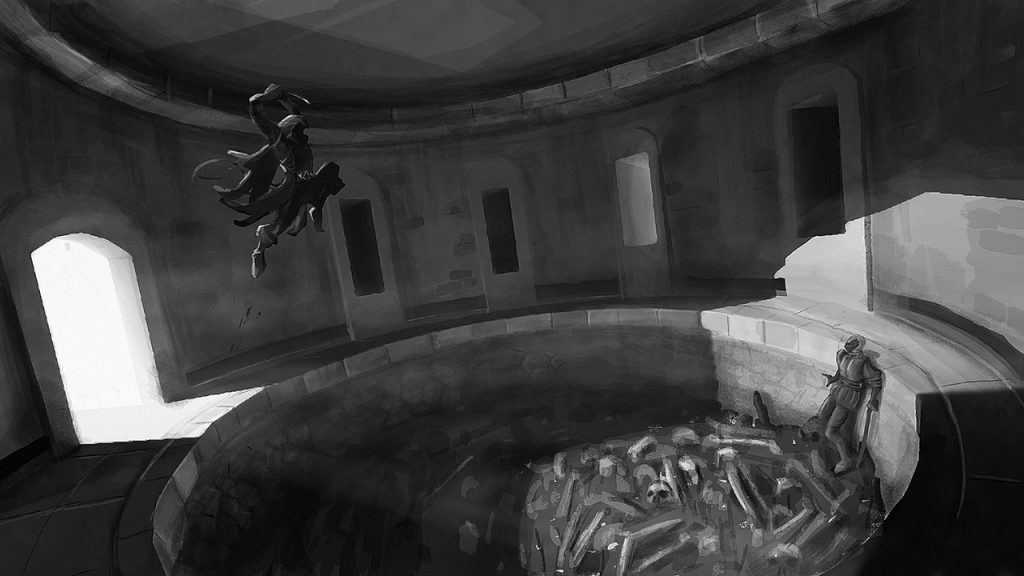
Assassination’s concept in Assassin’s Creed 2 drawn by Mufizal
He was assigned as the lead artist for Teenage Mutant Ninja Turtles: Turtles in Time for PS3 and Xbox One at Ubisoft SG, and eventually moved on to the early stages of Assassin’s Creed 2.
He remembered, “The game is very much raw. So, Ubisoft SG was the one that came up with the linear gameplay sequences. The idea was to create this very expensive linear gameplay sequences so you start from point A and you go through the scenes until you finish at point B, which is similar to the Uncharted series.”
Linear gameplay refers to a predetermined plot, where players have to face every single challenge by chasing enemies using free-running tools or solving puzzles in order to finish the sequences.
As players discover hidden tombs and bask in the magnificent architectures through Ezio Auditore’s perspective, the main protagonist for three successive Assassin’s Creed games, he also trained other artists to put the best artistic practices into their work.

Venturing through one of the secret tombs in Assassin’s Creed: Revelations
“I’m very fast in whatever task that is given to me. I’m very fast and efficient. When I do something, I do it as efficiently as possible. I spent the most time trying to find a shortcut. So, I try to optimise my workflow as much as possible.
“I guess that’s the reason why they put me in as the lead artist to teach other artists how to optimise their workflow, make sure they do their work quickly. Not only it’s much faster, but it’s much more beautiful and more accurate.”
However, speed doesn’t mean you have to compromise art quality. Mufizal elaborated, “When you work in video games, a lot of the things are about repetition and accuracy. So you use the same asset over and over again. If you can create a really nice asset, we can keep reusing the same asset and each of the assets would look good (in any environment).
For example, if you want to create a cup, the trick is to not make that single cup look beautiful. The cup has to be as generic as possible. That way, when you put a cup together, it would look nice as one whole big picture so you make your work more efficient and you make the big picture look beautiful.”
Bringing enthralling pirate ship battles in Assassin’s Creed 4: Black Flag

Lavish sea landscape in Assassin’s Creed 4: Black Flag by Malaysian illustrator Teo Yong Jin
With his intimate knowledge of the series, he was trusted to be the art director for Assassin’s Creed 4: Black Flag alongside Raphael Lacoste to create the artistic vision for the entire naval section, including the linear missions in the game.
For the first time in the series, naval exploration plays a huge role, where players will control Edward Kenway, a pirate-assassin who captains the Jackdaw, a brig he captures from the Spanish fleet.
As Ubisoft Singapore was the studio that developed the ocean tech, Mufizal revealed, “It all started out as an idea in Assassin’s Creed 3. We discovered that it was a very unique way of experiencing vehicular gameplay because nobody has made a fully interactable ocean using the naval vessels.”
“Because we received good feedback in Assassin’s Creed 3, the idea for Assassin’s Creed 4 was built around the idea of the naval gameplay and they make a particular game around the pirate lore and fantasy.”

Jackdaw’s sail customisation by Teo Yong Jin
Mufizal was responsible for creating the visual look of the pirate ships including Kenway’s Jackdaw, Queen Anne’s Revenge and more. His team developed the visual language in order for the players to distinguish the type and size of the ship from a distance based on the sails’ layout.
Every structure of the ship must look convincing on the ship’s outward appearance compared to the inside of the ship because players spend most of the time engaging in naval combat and shooting cannons at other hostile ships.
When asked how they designed the ships with a great deal of attention and details, Mufizal said Ubisoft invested a lot of money into three important factors in their game development: research, development, and references.
To recreate the authentic pirate environment, he and his team travelled to the Golden Age of Piracy hotspots. “We actually flew to Havana, Cuba. We stayed for 2 – 3 weeks. We went to Havana, to the Dominican Republic. We stayed in the jungles of Dominican Republic to explore the jungle and research the flora. We went to the naval museums and then we also got a naval expert.
“The expert naval scholar helped to advise us on shipbuilding materials, methodology, and ship terminologies. We would have to know what astern means, what sideboard means, what portside means, moonraker sails. At the end of the project, everyone become some sort of a naval officer,” he joked.
The life of an art director
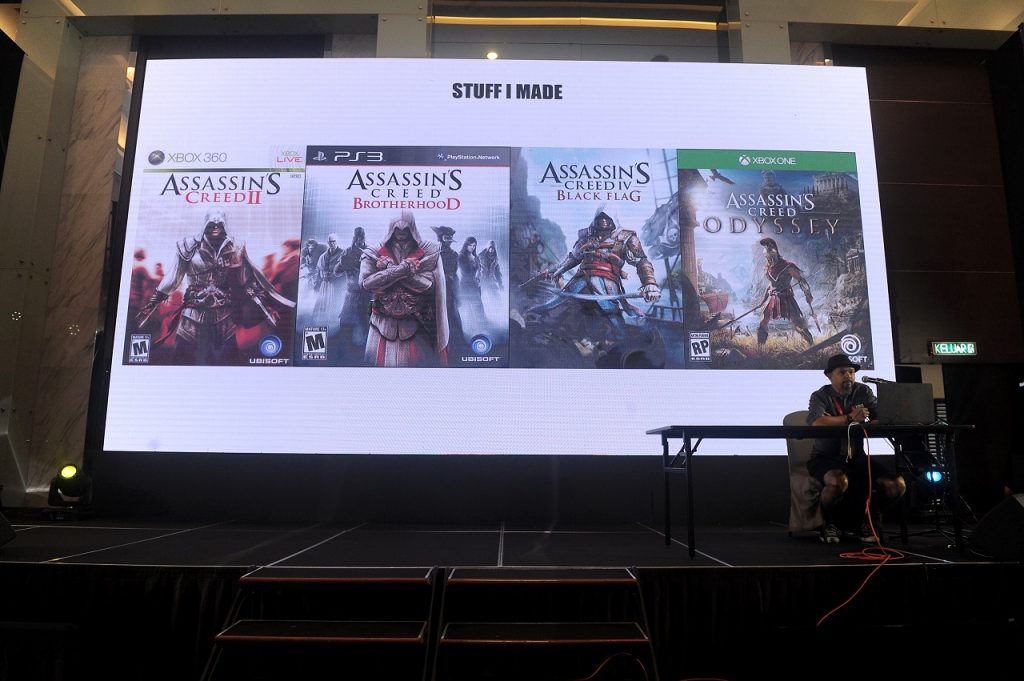
Mufizal shared his experience from being lead artist to senior art director in Ubisoft as well as an experienced sculptor at Level Up KL 2018
As an art director who manages a talented pool of artist, he deals with rejected ideas. Mufizal said, “You move on. Ideas are cheap. You should not get attached to an idea. Everyone has a good idea. The reasons why would the idea be rejected is one: you don’t know how to sell the particular idea; two: you don’t know how to implement the idea; three: nobody else wouldn’t know how to implement that idea.”
“My job as an art director is to be able to sell an idea or the dream by providing concept art, making a slide presentation to give a solid foundation of the idea and suggestions on how we can implement this idea.”
“The people who are highest paid in a particular organisation are not the people who come out with the idea. The people who implement and execute the idea, are the ones who are the highest paid.”
Assassin’s Creed 4: Black Flag received favourable responses from game critics and fans alike especially the vast naval exploration, which revitalised the whole series. This visual look has carried out into the rest of Assassin’s Creed’s games including the latest instalment, Assassin’s Creed Odyssey.
Polishing raw pearls in the digital sea
Mufizal believes that Malaysia is heading towards a healthy growth in the industry. “When I first started 15 years ago, there were only a handful of video game companies such as GameBrains and Phoenix Game Studio. Now, there are hundreds of video game companies here.”
Southeast Asia is the coveted market for video games with a population of 630 million people. “The quality of talent per capita in Malaysia and Southeast Asia is 10 times more than anywhere around the world.” However, these talents go unnoticed due to lack of exposure and promising jobs within the industry.
“I always get amazed every time I go to conferences, where I’m just randomly sitting down and having lunch with some random person from Perak or Terengganu that has never been to any big city. They like video games and they showed me their portfolio. I was blown away at how talented these people are… it’s just that they don’t have the right direction.”
According to Mufizal, Malaysian talents need to have “a sense of particular direction and focus” as many of them put their fingers in too many different pies and fall victim into various game types and genres in the industry. Malaysia also consumes different cultures altogether from Western to Eastern to even Malaysian culture, making it one “gigantic delicious rojak.”
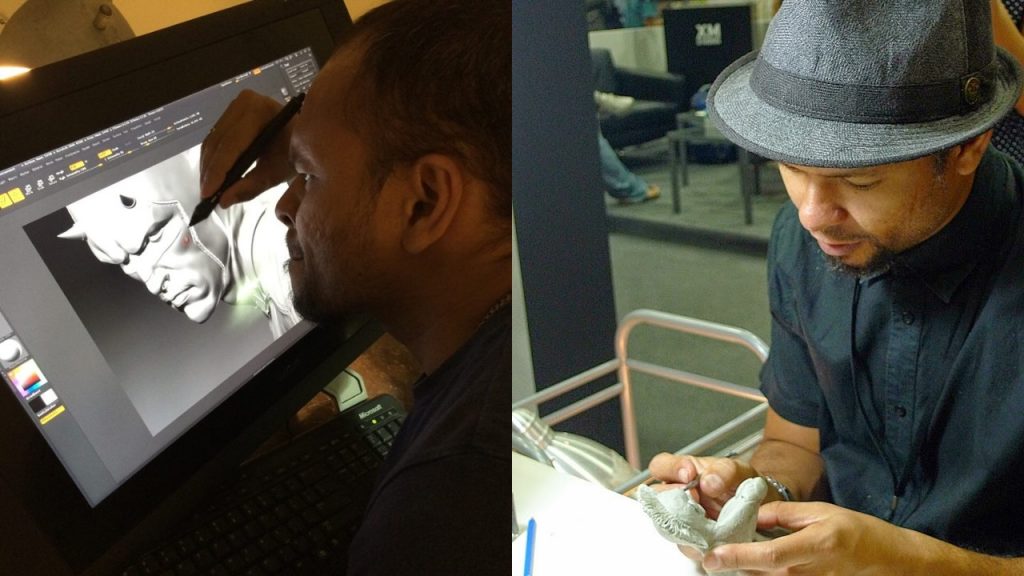
Mufizal is also a long-time sculptor and a founder of Hand Made Object (HMO), which he has worked with numerous clients such as Capcom, XM Studios, and Ubisoft
This situation leads to our raw talents being scattered everywhere without proper bearing. “If you’re focused on Western cultures, focus on that (or vice versa) for a while to get something solid first. Once you performed that, then you can consider doing sub-genres based on the games you want to develop because when you’re too multifaceted and go all over the place, you will never get anywhere,” he reflected.
Mufizal took an example from PlayerUnknown’s Battlegrounds (PUBG), which initially started from a gamer’s mod then morphed into a full-fledged game. “If you have a company that makes casual games, then maybe you can take that casual game idea to a double-A game production and evolve it into a triple-A game.
The same principle is not only limited to brand new developers but it also applies to major game studios. “Assassin’s Creed is also evolved from Prince of Persia,” said Mufizal. “I think Prince of Persia got phased out and at that time, Ubisoft was gearing towards making a new IP.”
As a 15-year-old veteran in the video games industry, he advised the aspiring game developers to be a master of the fundamentals of your creative field. “A great artist is not determined by the tools used but by his/her knowledge of art,” he said. By having a strong understanding of the basics in game design, programming, art or regardless of any discipline, Mufizal believes that these creative minds can effortlessly work with any kind of tool.
Sculpting and family pictures courtesy of Mufizal Mokhtar.

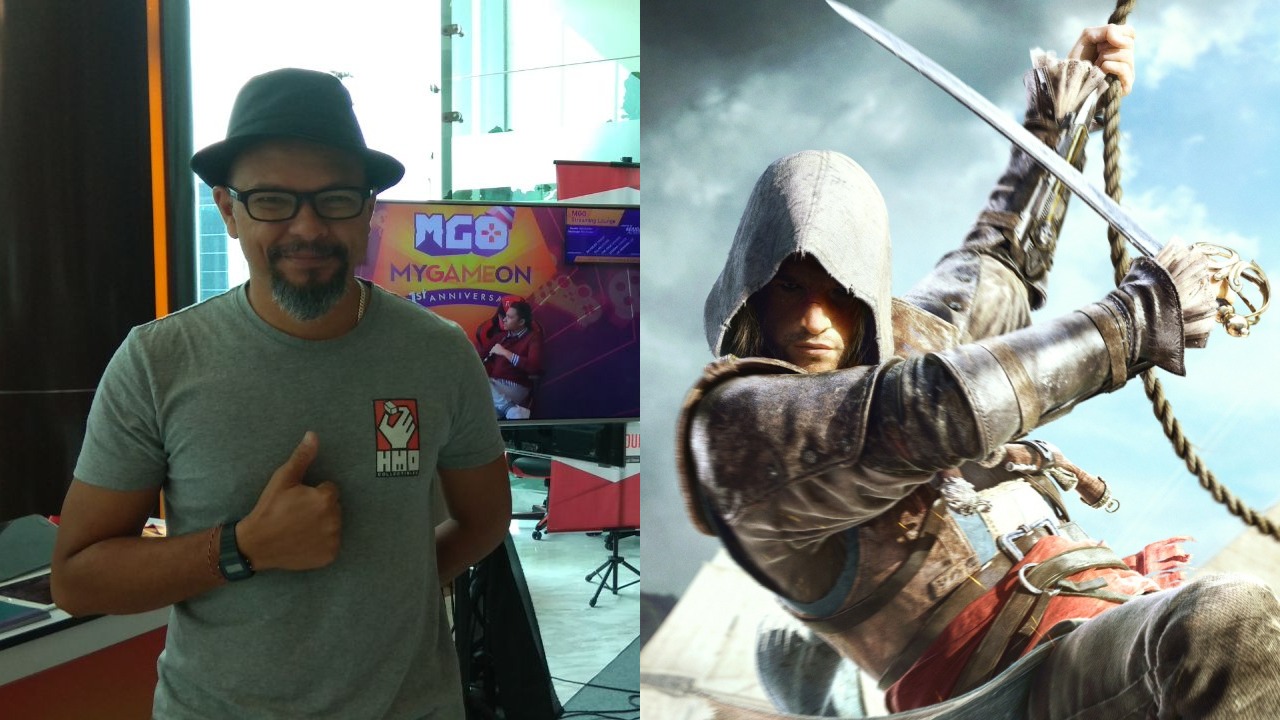
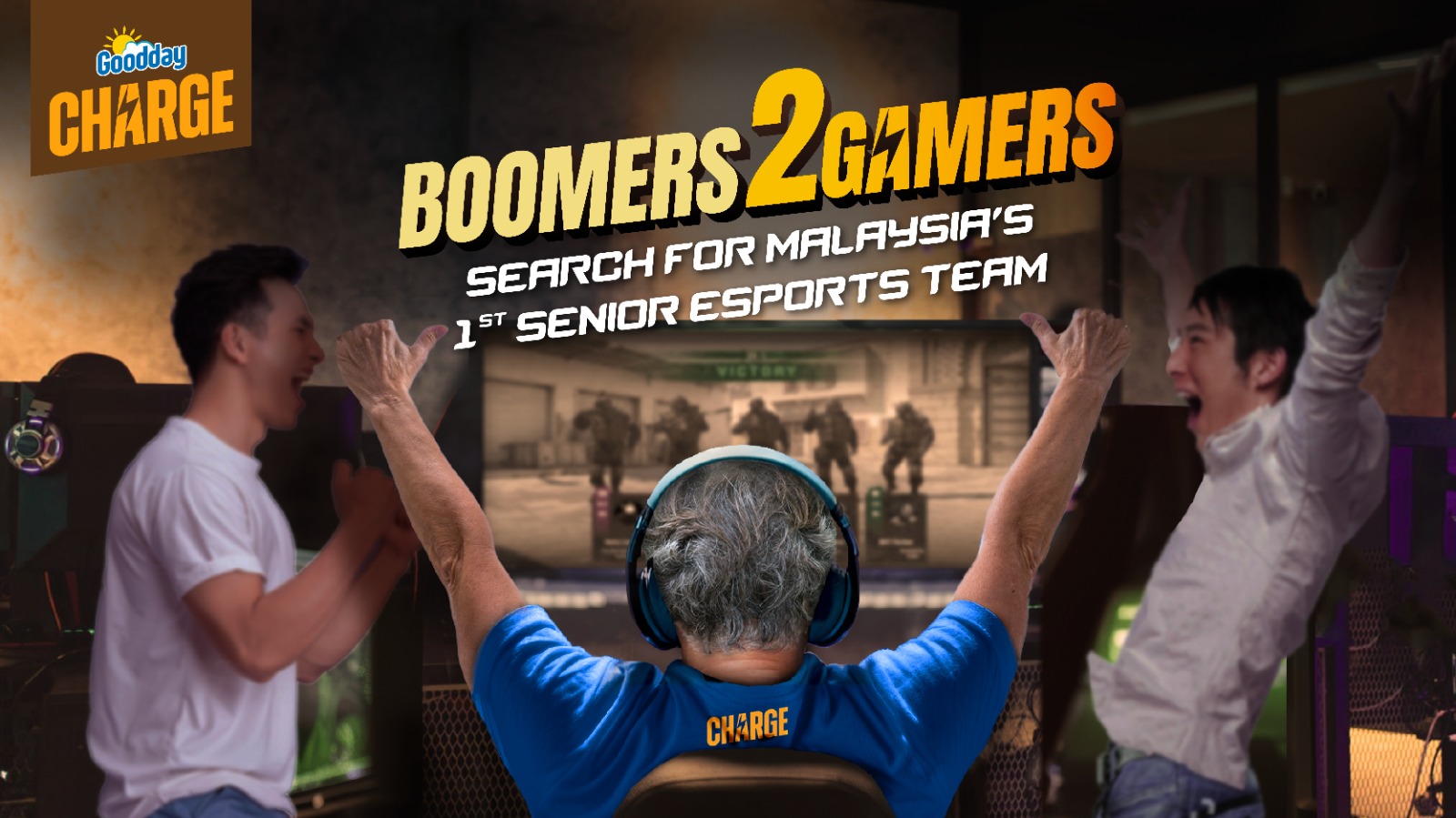
 4 bulan yang lepas
4 bulan yang lepas